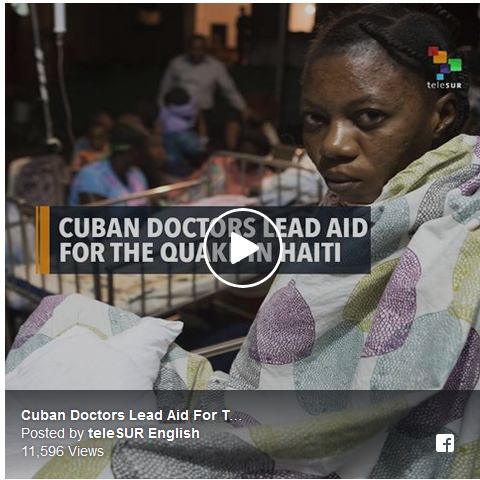

A powerful earthquake shook northern Haiti on Oct. 6 at 8:11 p.m. Though it measured 5.9 on the Richter scale — significantly smaller than the one that hit Port-au-Prince in 2010 — it still created great hardship. Haitian authorities reported that 17 people died and 427 were injured, figures expected to increase.
Reports of damaged structures were incomplete. A major aftershock at Richter 5.2 occurred on Oct. 7.
The Oct. 6 earthquake, which shook Haiti’s northwest, was foretold. Throughout September, there were a number of smaller shocks, indicating that stress on the two plates underneath Haiti was increasing. Sooner rather than later, it would be released in a major shock.
The general director of the Bureau of Mines and Energy, Claude Prépetit, a geological engineer, held a press conference Sept. 24 calling for reinforcing schools and other public buildings and preparating for a major shock. “All this seismic activity could be a precursor to a major earthquake of magnitude 7 or 8.” (Haïti-Liberté, Sept. 28)
The main danger in earthquakes comes from collapsing buildings and other structures.
The epicenter of the quake was in the ocean, 12 miles north of Port-de-Paix, northwest Haiti’s largest city. No major tsunami was reported.
Reporting on Gros-Morne, a large town to the southeast of Port-de-Paix, Deputy Perilus Worms from the National Assembly told the Miami Herald on Oct. 8, “Practically all of the infrastructure has been damaged.” He said that about 500 families were affected, 476 buildings were damaged and 57 homes were destroyed.
At least one death occurred on La Tortue Island, which lies to the north of Port-de-Paix. Eight fatalities, perhaps more, occurred in that city.
The main hospital in Port-de-Paix, which was scheduled to be replaced, had to be abandoned, because cracks developed in the structure, the power went off, and the staff refused to enter. Emergencies were being treated on the hospital grounds with some patients in beds and others on the ground, writhing in pain from wounds created by falling concrete and rebar. By Oct. 7, a tent big enough for 15 beds had been erected.
The hospital director was hoping to obtain more tents, but the government had set up roadblocks to try to coordinate the flow of aid into the afflicted areas, so it was unclear when the tents would arrive.
The government wants to control and organize the delivery of aid, but it was clearly not ready to move rapidly.
Cuban doctors respond swiftly
By Oct. 7, two Cuban medical teams were working in afflicted areas. One was in Gonaïves, the large city south of Gros-Morne, where there were casualties and injuries. A surgical team went to Port-de-Paix, where they treated 164 patients shortly after their arrival. (Miami Herald, Oct. 8)
The international response to this crisis, other than Cuba’s, was so tepid that the International Organization of Francophonie, a collection of French speaking countries to which Haiti belongs, which was meeting in Erevan, Armenia, issued a call for its members to rapidly and concretely respond to Haiti’s crisis. (AlterPresse, Oct. 8)
Cuba’s medical assistance in Haiti began in 1998, after Haiti was hit by Hurricane George, which caused 230 deaths, destroyed 80 percent of Haiti’s crops and left 167,000 people homeless. Cuba’s response to this disaster was to immediately offer medical aid.
Since 1998, Cuba has trained Haitians in medical skills. Trainees are urged to return to their home communities afterwards — a policy of “brain gain” rather than “brain drain.” Some specialists have estimated that Cuban medical teams provide 70 percent of all medical care in Haiti. Vital statistics from 2007, after 10 years of Cuban medical presence in Haiti, showed a clear improvement in overall health. (Counterpunch, April 1, 2010)
The U.S. doesn’t appear to have made any official response to this crisis. It is still maintaining its right to deport 50,000 Haitians living in the U.S., denying them temporary protective status which they obtained after the 2010 earthquake.
Boston Baristas at Blue Bottle coffee shops in Boston are so fed up with their…
En su continua campaña genocida contra el pueblo palestino, Israel utilizó aviones no tripulados el…
Israeli military veteran in Warsaw: ‘Liberate all ghettos’ By Michael Kramer On the 82nd anniversary…
The Vietnamese revolution to liberate its country from imperialism had a decisive victory 50 years…
The epic struggle of the Palestinian people against the full weight of U.S. imperialism and…
The following report comes from the Bronx Anti-War Coalition organizers on a protest held in…